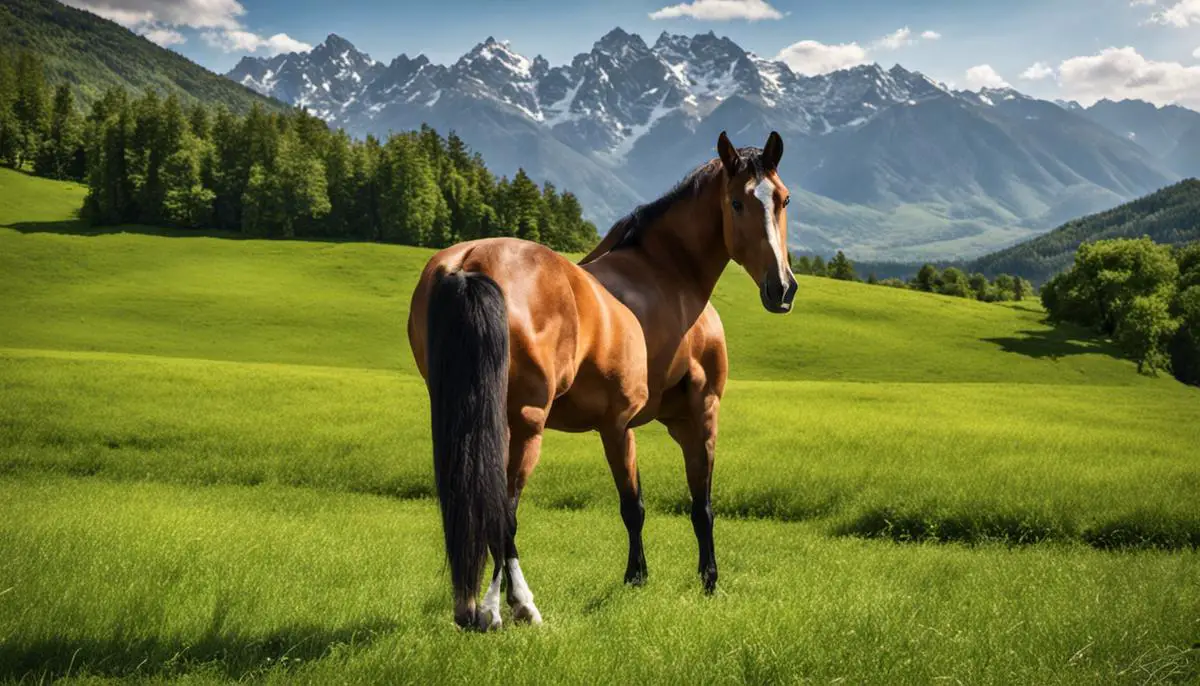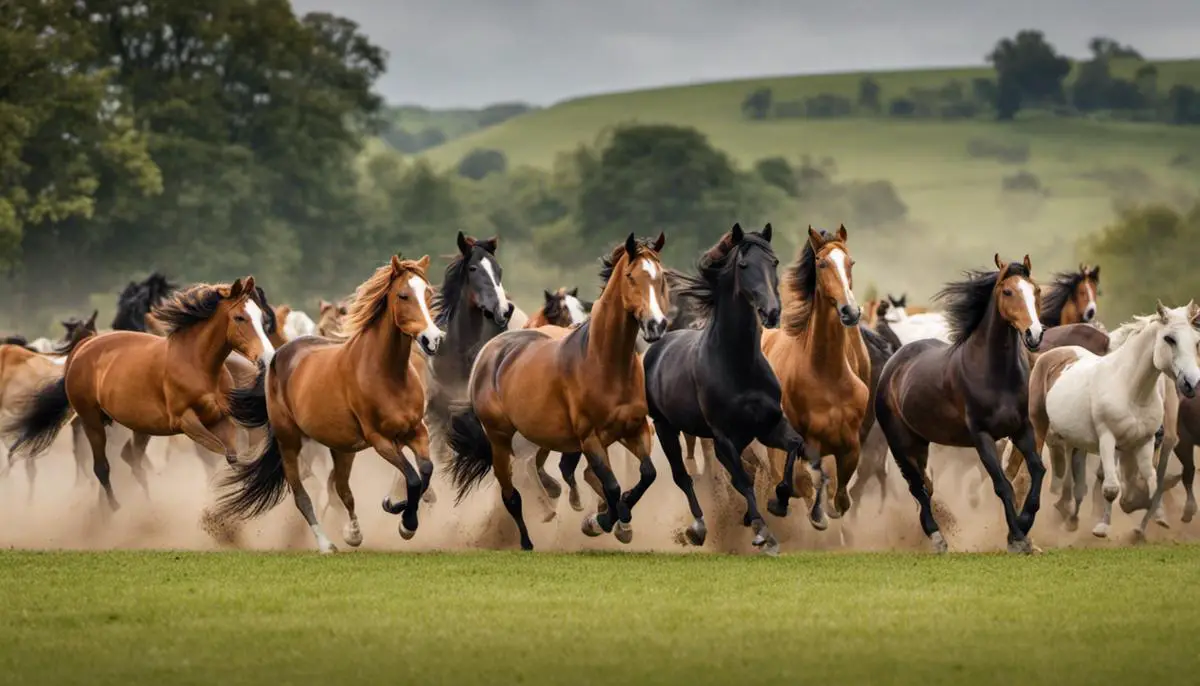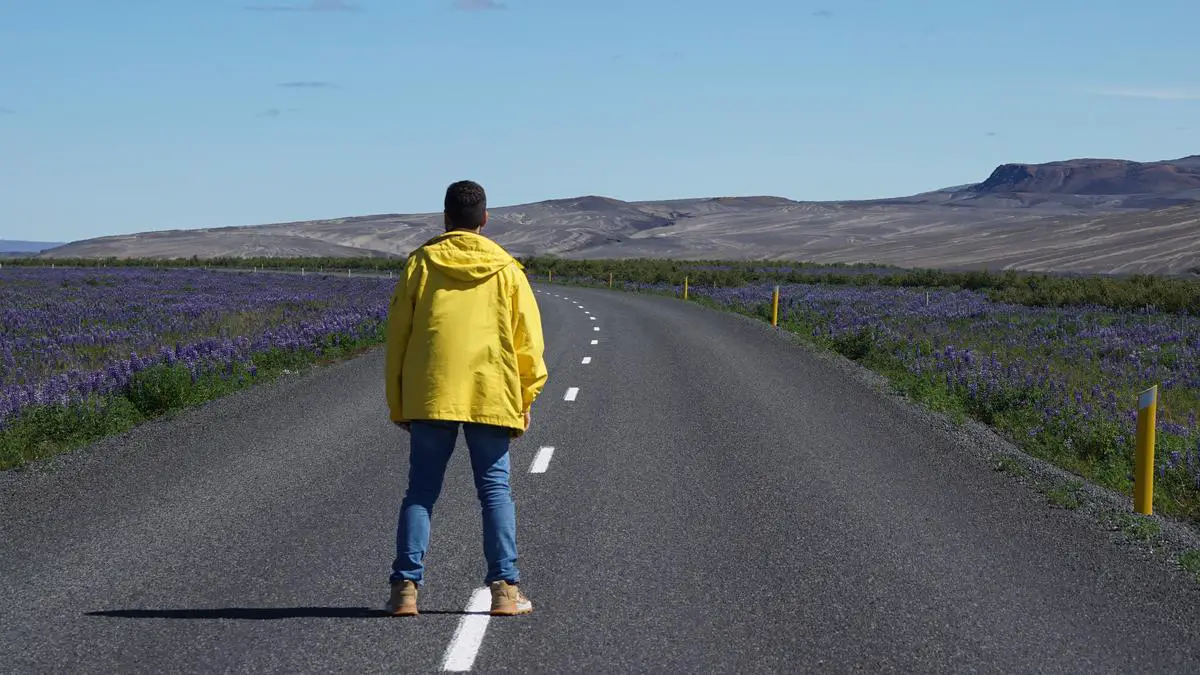Understanding Equine Inbreeding: Are Sibling Horses Mating?
Do horses mate with their siblings? Horses, like many other animals, generally do not engage in mating with their siblings. In the wild, horses typically disperse from their natal herd as they reach sexual maturity, reducing the likelihood of inbreeding. In domestic settings, responsible breeding practices are employed to avoid incestuous pairings, which can lead to undesirable genetic traits and health issues in offspring. Horse breeders carefully select mates for their horses, considering factors such as lineage, conformation, and temperament to improve the breed’s overall quality. This deliberate approach minimizes the chances of siblings mating and promotes the genetic diversity and health of the horse population. Therefore, while it is theoretically possible for siblings to mate, it is actively discouraged and rare in managed horse breeding programs.
In the intricate world of equine love and relationships, intricate patterns of genetic selection, societal hierarchies, and human interaction play critical roles. A certain level of complexity becomes apparent when the phenomenon of sibling matings amongst horses is examined closely.
Particularly within the context of our human interactions that have significantly altered natural breeding processes, understanding how genetic diversity impacts the wellbeing and health of these majestic creatures becomes of utmost relevant.
This discourse delves into horse breeding practices, the significance of genetic diversity, intraspecific relationships in equine societies, and human-induced artificial selection.
Horse Breeding and Genetic Diversity
Genetic Diversity in Horse Breeding: An Imperative Paradigm
While a layperson might see a horse and simply perceive an equine figure of beauty and grandeur, scholars, geneticists, and horse breeders view these majestic creatures through a more scientifically nuanced lens. This article delves into the intricate realms of equine genetic diversity, elucidating the pivotal role that it plays in horse breeding.
Genetic diversity—the variety of hereditary information within and between populations—serves as the linchpin of a species’ adaptability and longevity. In horse breeding science, understanding this diversity aids breeders in constructing strategies that optimise a balance between preserving pedigree bloodlines and mitigating the risk of genetic disorders.
Primarily, one can envision genetic diversity as an evolutionary insurance policy. Greater genetic variety imparts better resistance against harmful diseases, while offering a wellspring of traits that promote survival in various environmental conditions. For instance, the hardiness of Yakutian horses in the frigid Siberian winters is the result of generations of natural selection and genetic shuffling at work.
Harnessing these principles, breeders strive to expand the gene pool within a particular breed while maintaining its distinctive qualities. To say it straightforwardly, genetic diversity is the underpinning of sustainable horse breeding.
However, it is not without its conundrum. Overemphasis on certain desirable traits—a practice known as selective breeding—can inadvertently narrow genetic diversity, causing harmful recessive traits and genetic diseases to pervade a breed. It is here that we encounter the notorious balancing act of horse breeding.
Sound knowledge of equine genetics can assist breeders in moderating the risk of inbreeding depression—a decrease in fitness and vigour due to reduced genetic diversity. Genome sequencing, when combined with robust data analysis, allows breeders to predict the likelihood of progeny inheriting debilitating conditions such as Polysaccharide Storage Myopathy or Severe Combined Immunodeficiency.
Additionally, advanced genetic techniques have opened the door to preserving and even restoring genetic diversity. Germplasm (sperm, eggs, embryos) banking, in tandem with assisted reproductive technologies like artificial insemination and embryo transfer, provide routes to storing genetic diversity and potentially reintroducing it should a breed’s gene pool become perilously narrow.
In conclusion, understanding and intelligently leveraging genetic diversity is of vital importance to horse breeding. It shapes breeds, fuels adaptation, and counters genetic disorders. This advanced understanding, coupled with cutting-edge science, provides the tools for breeders to navigate the challenges and rewards of cultivating equine genetic diversity, thus ensuring the health and longevity of these magnificent animals into the foreseeable future.

Intraspecific Relationships in Horses
As we continue to elucidate the intricacies of equine genetic diversity’s role in horse breeding, it is essential to appreciate the social structures and interactions within the horse population. This understanding shapes breeding behaviours and influences strategies adopted by breeders to nurture and enhance genetic diversity.
Unlike many predator species, horses exist in sophisticated social structures which directly influence breeding behaviours. Typically horse societies, or herds, consist of multiple females (mares) and their offspring, led by a dominant male (stallion). Subordinate males may form bachelor herds or live on the periphery of the core herd.
These hierarchical herd structures represent a microcosm of natural selection. Dominant stallions, exhibiting qualities of strength, health, and leadership, secure breeding rights, thus propagating these beneficial qualities in future generations. Subordinate males must either displace the leader or mate opportunistically, keeping the gene pool diverse with a constant influx of novel genes.
Mares too have likewise been observed exhibiting selectivity in their mates. Given various options, a mare might choose a healthier or more genetically-compatible stallion, indicating a subconscious drive towards genetic diversity for the benefit of their offspring. This discerning selectivity encourages genetic diversity, hedges against inbreeding depression, and promotes evolution of the race as a whole.
Interactions between horses also adopt a unique mechanism, known as ‘teasing,’ performed by breeders to gauge mares’ readiness for copulation. This crucial interaction gives mares the ability to express rejection or acceptance of a particular suitor. Disruption of such complex behavioural interactions by artificially forcing certain matings can potentially contribute to the loss of genetic diversity.
Understanding the complex dynamics of herd hierarchy and breeding interactions allows breeders to simulate a natural selection process, ensuring robust and diverse offspring. Moreover, adopting herd-like situations in horse farms may hold the key to fostering a more behaviourally rich genetic strain.
Moreover, delving deeper into horses’ interaction within species underscores the relevance of behavioural traits in breeding selection. While physical characteristics have long been favoured in selective breeding, giving due consideration to behavioural traits may unlock superior adaptability and survival traits buried beneath the layers of raw genetic data.
In conclusion, horse breeding is far from a straightforward venture; it requires delicately balanced strategies that embrace both the tackle of genetic challenges and the subtleties of equine social interaction. This holistic approach to horse breeding ensures not merely genetic diversity but also the welfare and fulfilment of the animals, embodying the ideal harmony between scientific advancement and nature’s wisdom.

Artificial Selection and Inbreeding in Domestic Horses
Selective breeding has been a long-engrained practice in human interactions with equine species, a practice designed to augment or sustain perceived essential characteristics within various horse breeds. However, such practices have perhaps unintentionally contributed to higher instances of inbreeding, eroding genetic variety, and placing the longevity of specific horse breeds at risk.
One significant manifestation of human interference in horse breeding comes from the practice of favouring certain stallions for their advantageous traits, often pertaining to strength, virility, physical dimensions, or prestige heritage. While useful in propagating sought-after characteristics, over-reliance on a small pool of sires obscures the necessity for a varied gene pool.
Traditionally, in wild social structures, alpha stallions propagate their genes, but mating rights are also shared with lesser males. This natural distribution of diversity allows reaching a balance where beneficial qualities are indeed propagated, but not to the extent that the gene pool becomes dangerously shallow. The exclusion of this subordinate male genetic contribution in selective breeding schemes is a poignant example of human interference leading to inbreeding and reduced diversity.
Mare selection is a similarly impinged practice. Naturally, mares display a certain level of selectivity for mate choice based on factors such as the stallion’s health, fitness and competitive success. Disrupting these natural mechanisms by removing this selective power from mares could inadvertently breed out critical genetic diversity, leading to increased inbreeding within the population.
Additionally, equine social behaviours and interactions play a crucial role in managing genetic diversity. Through complex social hierarchies and behaviours, horses innately manage their propagation. However, selective breeding practices often disrupt these natural processes, leading to a greater risk of genetic disorders and increased homogeneousness in the gene pool.
The practice of ‘teasing,’ used to determine mares’ readiness for copulation in breeding programmes, exemplifies another anthropogenic interference which upsets horses’ natural breeding rhythms. Consequently, the pressure to perform and produce offspring may further limit genetic diversity by overriding mares’ natural reproductive cycles and choice for a suitable mate.
Despite these challenges, expanding the understanding of natural selection processes within equine species offers insightful direction to redefine breeding strategies. Tools such as behavioural ecology, socio-sexual behaviours, and considering traits beyond physical characteristics, promise a nuanced selection approach that respects both the need for genetic diversity and breed preservation.
In conclusion, interventions to emulate natural selection processes, uphold behavioural diversity, respect mare mate selectivity, and retain the necessary influence of non-alpha stallions in the gene pool offer a sustainable response to instances of inbreeding catalyzed by selective breeding interference. By meshing the irrefutable science of genetics with the intricate tapestry of equine social organisation, it is feasible to imagine a future of horse breeding that preserves breed traits without compromising genetic health. This approach maintains the cultural, economic and biological integrity of horse breeds for the sustained enjoyment and benefit of future generations.

Troubling thought, it is, that humanity’s penchant for selective breeding in pursuit of specific desirable traits may inadvertently lead to the compromise of the overall health and vitality of horse populations.
With reduced genetic diversity potentially leading to a myriad of genetic disorders and undermining the strength of the breed, the excitement of acquiring a horse with unique traits might be eclipsed by the responsibility towards the species.
Understanding the nuances of equine social structures, mate choices, and the protective mechanisms of nature itself offers vital insights into how these beautiful beasts thrive. As we step away from the realm of the equine, ponder over the course of action necessitated by our findings, and consider the implications they bear on any species subject to human-induced artificial selection.
